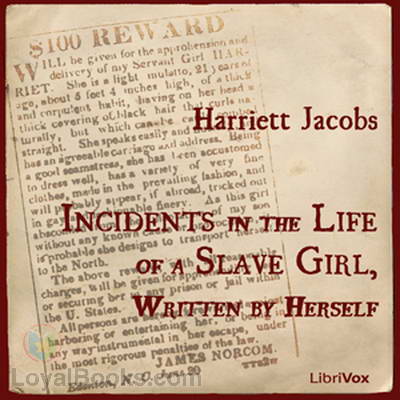When recalling and recapturing the evils of the transatlantic slave trade, much attention is paid to the physical suffering of African Americans during their subjugation. Films, photos, textbooks and iconography run red with their blood, ragged with their backs whipped raw. While this evidence of extensive violence irrefutably establishes slavery as a crime against humanity, the American public at large continues to gloss over the interior, psychological toll that slaves and their families were forced to undergo for generations. For like their white counterparts, black slaves did not need to study philosophy in order to ruminate on the nature of death, of God, of ethics and moral character. A core concept throughout Harriet Jacobs’ novel asks: How does one go about being a “good person” or a “good Christian,” while being oppressed as a slave? Especially a female slave? With the addition of gender conflict, Incidents in the Life of a Slave Girl implicates themes of religion, morality and sex, touching on the various ethical codes slaves must traverse while living under a system which casts nothing but “widespread moral ruin” in its wake (Jacobs 46).
The connection between slave culture and Christianity is a complex one. While many, like the protagonist’s grandmother, found a precious vessel of peace in placing “trust in God” (22) before all else, religion was also used as a means of justification and manipulation by slaveholders and their supporters. “Although your masters may not find you out, God sees you; and he will punish you” (60). And even without decontextualizing, how does “Thou shalt not steal” translate to a slave whose life and labor was stolen from him first? “Turn the other cheek” to a slave woman crushed beneath the heel of her children’s rapists, their killers? It is Linda’s brother, William, who first introduces the concept of “goodness” in relation to slaves. He confides to Linda his observations of a world devoid of human happiness, and Linda (ignoring the “beam in her own eye”) attempts to comfort him by suggesting that perhaps if they are good, they may be able to find some form of contentment in life despite their enslavement (18 – 19). William responds with a child’s plain truth: “I try to be good; but what’s the use? They are all the time troubling me” (18). It’s a simple statement, but reflects the more drastic examples on the other end of the spectrum. The pulse behind Jacobs’ novel questions, “How much responsibility, exactly, does God expect from those living in chains?”
This is all the more emphasized because of Linda’s gender, as the constant atmosphere of sexual abuse which Harriet Jacobs describes in the novel conflicts viciously with doctrine of “chastity” and virtue” espoused in the Bible. Even if a slave girl wished to live piously, she would still be compelled to drink from “the cup of sin” (28); it would be “deemed a crime in her to wish to be virtuous” (29), and the influences of slavery would make her, like Jacobs, “prematurely knowing, concerning the evil ways of the world” (47). Concerning Jacobs herself, the frankly despairing defensiveness within Linda’s narration in regards to her relationship with Mr. Sands indicates the rigid social mores imposed on women at the time. After admitting she had slept with this free white man, Linda begs those free women reading this book not to judge a “poor desolate slave girl too severely”, for the “powerful grasp of the demon Slavery” had proved too strong (48).
Harriet Jacobs maintains throughout the novel that the “condition of a slave confuses all principles of morality, and, in fact, renders the practice of them impossible” (48). She likens the institution to poison infecting both slaves and slaveholders alike, and identifies slavery as the root of any crookedness on her part; for a tainted tree can only beget rotten apples. With this understanding, Jacobs, or ‘Linda,’ is able to express how experiences with slavery warp moral character, signifying that the moral fabric of America cannot be salvaged without the immediate and permanent abolition of chattel slavery in all its forms.
Jacobs, Harriet. Incidents in the Life of a Slave Girl. Edited by Paul Negri, Dover Publications, 2001, pp. 18 – 133.




